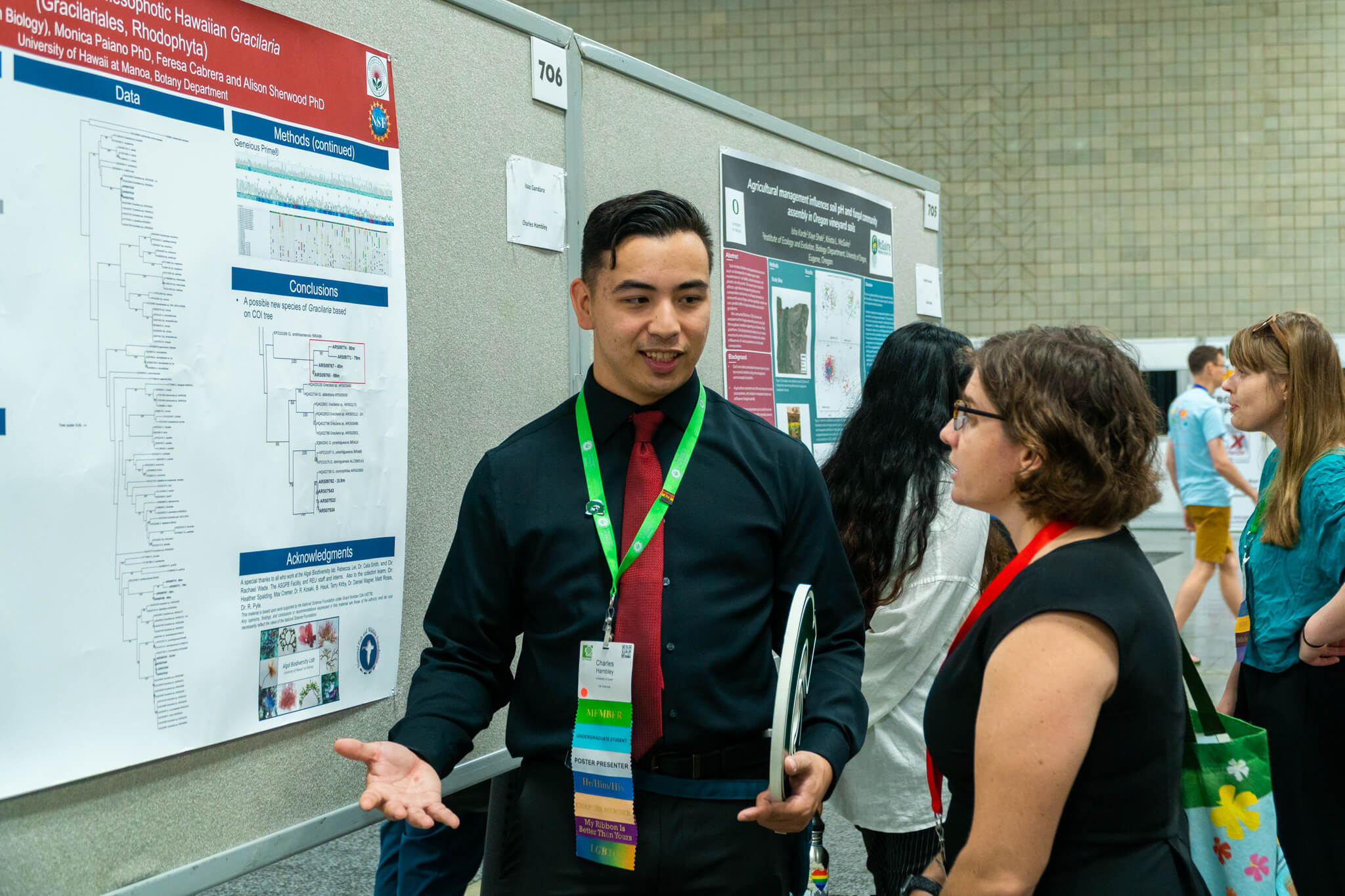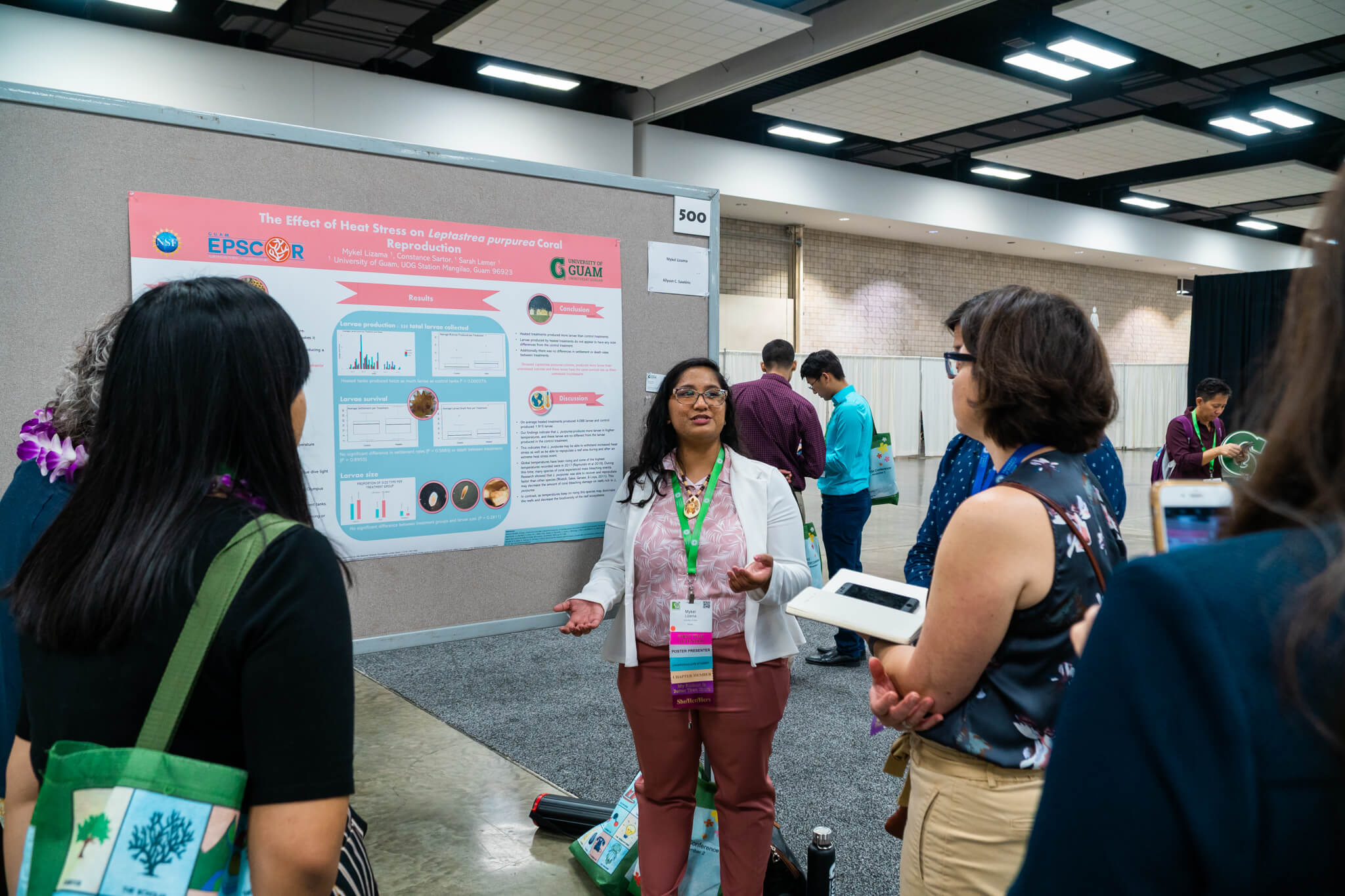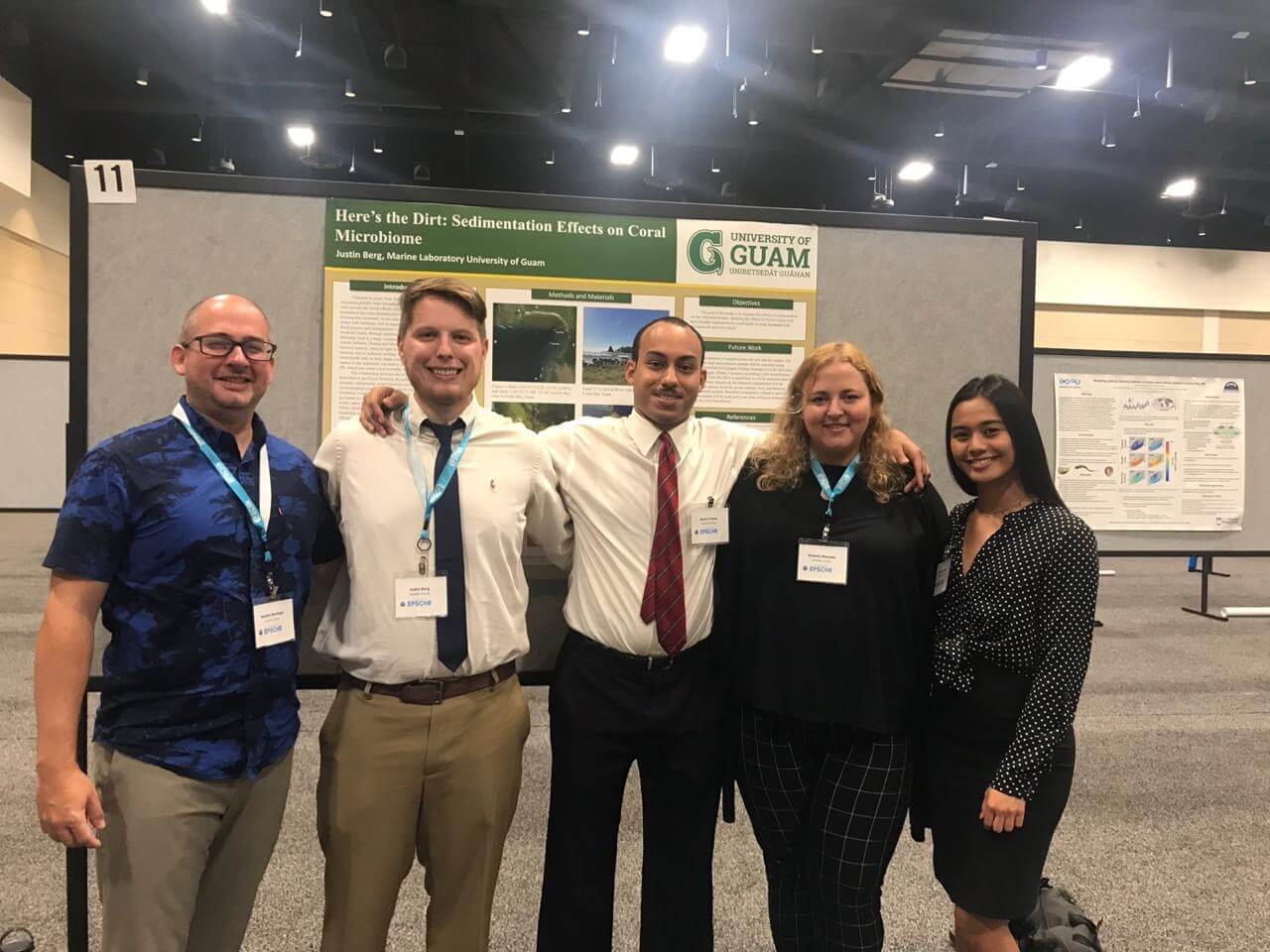Students present, network at largest U.S. STEM diversity conference
Students present, network at largest U.S. STEM diversity conference
Students present, network at largest U.S. STEM diversity conference
12/26/2019

The University of Guam joined thousands of students, mentors, and professionals in what is regarded as the largest STEM diversity conference in the nation to commemorate brilliant scientific minds from underrepresented minority populations.
Seventeen UOG undergraduate and graduate students and alumni had the opportunity to meet with experienced mentors and interact with hundreds of graduate school and career exhibitors at the 2019 Society for Advancement of Chicanos/Hispanics & Native Americans in Science’s National Diversity in STEM Conference from Oct. 31 to Nov. 1 in Honolulu. This year, the SACNAS conference brought together more than 5,000 attendees — the largest turnout yet.

“The SACNAS conference was such an enriching experience that all STEM students should attend,” Taitano said. “The fact that SACNAS focuses on the inclusion of minority groups in STEM makes the whole experience worthwhile. I found a deeper understanding of what I'd like to pursue in the future while learning about cultures that were represented at the conference.”
Taitano’s presentation was on the effect of terrestrial runoff on coral growth and physiology.
Travel for the Guam delegation to the SACNAS conference was made possible through Guam EPSCoR, the National Science Foundation’s Inclusion across the Nation of Communities of Learners of Underrepresented Discoverers in Engineering and Science Pilot: Growing STEM, the UOG Sea Grant program, the UOG Professional and International Programs, and the Research Corporation of the University of Guam.
National EPSCoR conference

They were accompanied by Terry J. Donaldson, Guam EPSCoR principal investigator; Bastian Bentlage, co-principal investigator and UOG assistant professor of bioinformatics; Rachael Leon Guerrero, director of the Office of Research and Sponsored Programs; and Robert Underwood, UOG president emeritus.
"Attending the national EPSCoR conference was an awesome experience for me because I was able to meet people in other EPSCoR jurisdictions across the country and was able to learn about their research in other disciplines outside of my own, including chemical engineering and hydrology,” Primov said. “I was also able to showcase my research and its impact on informing Guam's coastal management of the status of one of its most resilient reef-building corals, Porites lobata, using population genetics."
The trip was supported by NSF, UOG, Guam EPSCoR, and the University of South Carolina.
